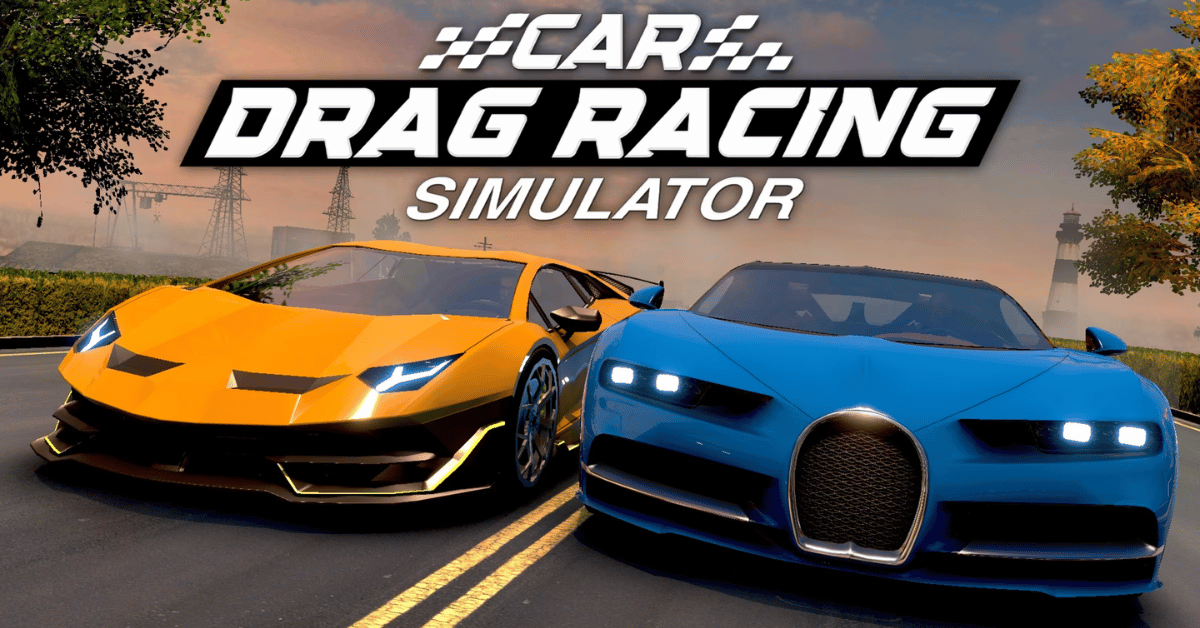In the world of motorsport-inspired gaming, a drag race simulator offers a compelling blend of mechanical precision, speed dynamics, and strategic decision-making. For enthusiasts and newcomers alike, it delivers an experience that mirrors the intensity of real drag racing while providing the freedom to experiment with setups, customization, and race-day tactics. A drag race simulator is not just about holding the throttle and waiting for the finish line—it’s about understanding the delicate balance between power, traction, and timing. Within the first moments of engaging with a simulator, a player discovers that reaction time and mechanical tuning are as critical as raw horsepower. The appeal lies in its ability to simulate the sensory rush of racing within a structured, analytical environment where every gear shift and tire choice can make the difference between victory and defeat. As gaming technology advances, drag race simulators have evolved into comprehensive platforms that allow users to explore both the engineering and driving aspects of high-performance racing. This article explores their mechanics, core features, customization possibilities, competitive strategies, and future developments in a way that mirrors the clarity and insight of real-world motorsport reporting. Whether you are a casual gamer looking to enjoy short bursts of speed or an aspiring e-sports competitor aiming for leaderboard dominance, understanding the finer details of drag race simulation will elevate your experience from simply playing to truly mastering the art of virtual racing.
Understanding the Core Mechanics of a Drag Race Simulator
At the heart of any drag race simulator is the recreation of acceleration-focused competition on a straight, measured strip, typically a quarter-mile or an eighth-mile. The primary objective is straightforward: reach the finish line before your opponent. However, achieving that goal involves a series of highly calculated actions. Players must time their launch with precision, controlling wheel spin and optimizing grip to ensure the most efficient transfer of power from the engine to the asphalt. The simulator uses a range of variables—engine torque curves, tire temperature, aerodynamic resistance, and weight distribution—to produce a realistic driving experience. The start sequence is critical, with reaction time measured down to thousandths of a second. Missing the optimal green light launch can cost the race regardless of vehicle horsepower. Once in motion, the balance between aggressive acceleration and mechanical sympathy determines performance. High-fidelity simulators integrate dynamic weather conditions, track temperature changes, and even engine wear over time, forcing players to adapt their strategies. This complexity transforms the experience from simple arcade racing into a competitive discipline that rewards both quick reflexes and deep mechanical understanding.
Key Features That Define a Quality Drag Race Simulator
A truly immersive drag race simulator distinguishes itself through the precision of its physics engine, depth of customization, and variety of racing conditions. The physics engine dictates how realistically the car behaves under acceleration, braking, and shifting. Players expect accurate representations of torque delivery, weight transfer during launches, and aerodynamic drag at high speeds. Customization is equally crucial, allowing modifications to engines, transmissions, tire compounds, suspension setups, and even aerodynamic packages. A robust simulator also includes a tuning garage where adjustments can be tested under controlled conditions before taking them to competition. Track diversity enhances replay value, with surfaces ranging from perfectly prepped drag strips to less predictable street environments. Some simulators incorporate bracket racing formats, where reaction time and consistency outweigh sheer speed, adding strategic depth. Multiplayer modes extend the experience by allowing players to compete against real opponents worldwide, while career progression systems give a sense of long-term achievement. Advanced telemetry systems record every detail of a run, enabling data-driven analysis for performance improvement. A strong combination of realism, flexibility, and competitive challenge is what separates an average simulator from a professional-grade drag racing platform.
Customization and Vehicle Tuning for Maximum Performance
Customization is more than a cosmetic exercise in drag race simulators—it is the process of crafting a machine that complements your driving style and strategic goals. The foundation of performance tuning lies in the engine build, where decisions about forced induction, displacement, and fuel delivery directly affect acceleration potential. Gear ratios can be optimized for specific track lengths, ensuring the engine remains in its power band throughout the run. Suspension tuning influences weight transfer during launch, affecting traction and stability. Tire choice is a decisive factor, with softer compounds providing superior grip but wearing down faster, and harder compounds offering longevity at the cost of initial traction. Aerodynamic modifications, such as front splitters or rear spoilers, can reduce drag or increase downforce depending on the track conditions. Even minor adjustments, like changing shift points or tweaking launch control settings, can yield measurable gains. Advanced simulators allow side-by-side comparisons of different setups through ghost runs or data overlays, making the tuning process both technical and rewarding. In competitive scenarios, players often develop specific builds tailored to particular weather conditions, track types, or racing formats, ensuring they remain one step ahead of their rivals.
Table 1: Common Tuning Adjustments and Their Effects in Drag Race Simulators
| Tuning Component | Adjustment Example | Effect on Performance |
|---|---|---|
| Gear Ratios | Shorter final drive | Faster acceleration, lower top speed |
| Suspension Stiffness | Softer rear springs | Improved weight transfer for better traction |
| Tire Compound | Soft drag slicks | Maximum grip, reduced durability |
| Aerodynamic Settings | Reduced rear wing angle | Higher top speed, reduced downforce |
| Launch Control RPM | Higher launch RPM | Quicker starts, increased wheel spin risk |
The Importance of Reaction Time in Virtual Drag Racing
While vehicle performance plays a substantial role, reaction time is often the deciding factor in a close drag race. In a simulator, this metric measures how quickly a player responds to the starting signal—typically a countdown tree with staged yellow lights followed by a green. The difference between a perfect launch and a slightly delayed one can translate into tenths or even hundredths of a second on the clock, which is enough to determine the outcome of a race. A strong reaction time requires mental focus, hand-eye coordination, and familiarity with the simulator’s timing system. Many competitive players use practice modes to develop muscle memory for launches, refining their ability to anticipate the green light without jumping early. False starts result in disqualification, making precision essential. In professional e-sports drag racing events, average winning reaction times can be as low as 0.020 seconds, demonstrating the importance of this skill. Some simulators even allow players to configure the starting sequence to mimic real drag strips, including pro tree and sportsman tree formats, adding authenticity and training value.
Simulation of Real-World Variables for Authenticity
What elevates a drag race simulator from simple entertainment to a near-professional training tool is its ability to simulate real-world variables. Track temperature affects tire grip, air density influences engine performance, and crosswinds can slightly alter a vehicle’s stability at high speeds. Advanced simulators integrate these factors dynamically, forcing players to adapt their setups and driving techniques. For instance, a hotter track might require a different tire compound or altered launch RPM to avoid excessive wheel spin. Cooler air can improve engine output but may also change optimal gear shift points. Some simulators replicate track rubber buildup, which increases traction in the racing groove but can become slippery if contaminated with debris or fluids. Weather effects like light rain or humidity are not just visual—they impact mechanical performance in subtle but significant ways. These layers of environmental realism not only enhance immersion but also reward players who take the time to study and react to changing conditions, much like real drag racers.
The Role of Data Analysis in Performance Improvement
Modern drag race simulators often come equipped with telemetry systems that record detailed information about every run. This data includes reaction times, split speeds, gear change points, tire slip percentages, and even engine load. Analyzing this information allows players to identify areas where they can shave off precious milliseconds. For example, a driver might discover that shifting 200 RPM earlier in second gear leads to better acceleration due to torque curve characteristics. Side-by-side comparisons of different tuning setups make it easier to determine which adjustments yield the most consistent results. In competitive play, teams often use this data collaboratively, assigning members to analyze performance trends and propose modifications. The most dedicated players treat this process like professional motorsport engineers, iterating on setups until they find the perfect balance for a specific event. This analytical approach transforms the simulator into a continuous learning platform rather than a simple gaming experience.
Table 2: Key Telemetry Metrics and Their Significance
| Metric | Description | Performance Insight |
|---|---|---|
| Reaction Time | Time from green light to launch | Measures driver’s start efficiency |
| 60-Foot Time | Time to cover first 60 feet | Indicates launch performance and traction |
| Trap Speed | Speed at finish line | Reflects total power and aerodynamic efficiency |
| Gear Shift Points | Engine RPM at each shift | Helps optimize acceleration curves |
| Tire Slip Percentage | Amount of wheel spin during run | Reveals traction issues or excess power delivery |
Competitive Play and E-Sports Integration
With the rise of organized e-sports, drag race simulators have carved out a niche where competitive integrity and technical mastery intersect. Online leagues host tournaments with structured rules, live commentary, and prize pools, attracting skilled players from around the globe. Competitors face the challenge of not only mastering their own setups but also adapting to unknown opponents’ strategies. Bracket racing formats ensure that matches remain competitive regardless of vehicle speed, placing emphasis on consistency and driver skill. Live telemetry feeds allow spectators to track performance in real time, enhancing the viewing experience. As simulators improve, the gap between virtual and real drag racing continues to narrow, with some professional drivers using these platforms for training during off-seasons. This crossover highlights the potential for drag race simulators to serve as both entertainment and a stepping stone toward actual motorsport participation.
FAQs
1. What is a drag race simulator?
A drag race simulator is a virtual racing platform that replicates the mechanics, physics, and strategies of real drag racing. Players experience timed sprints over short distances, focusing on reaction time, vehicle tuning, and optimal acceleration techniques.
2. How important is tuning in drag race simulators?
Tuning is critical, as adjustments to gear ratios, suspension, tire compounds, and aerodynamics directly influence acceleration, grip, and overall performance during a race.
3. Can drag race simulators help real-world racers?
Yes. High-fidelity simulators can serve as training tools by improving reaction time, understanding mechanical adjustments, and analyzing race data in a controlled environment.
4. Do weather and track conditions affect gameplay?
In advanced simulators, yes. Track temperature, air density, humidity, and surface conditions impact traction, engine output, and race strategy.
5. Are drag race simulators used in e-sports?
Absolutely. Many online leagues host competitive drag racing events with structured rules, live streaming, telemetry tracking, and even cash prizes for top performers.











